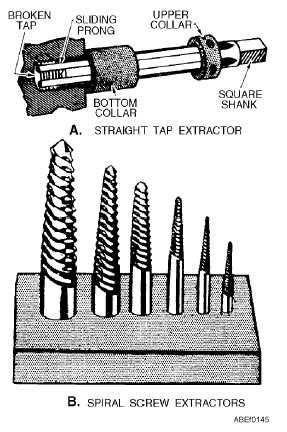at the air lines before changing grinding wheels,
needles, chisels, or other cutting or drilling bits.
The air hose must be suitable to withstand the
pressure required for the tool. A leaking or
defective hose should be removed from service.
The hose should not be laid over ladders, steps,
scaffolds, or walkways in such a manner as to
create a tripping hazard. Where the hose is run
through doorways, the hose should be protected
against damage by the doors' edges. The air hose
should generally be elevated over walkways or
working surfaces in a manner to permit clear
passage and to prevent damage to it.
All portable pneumatic grinders must be
equipped with a safety lock-off device. A safety
lock-off device is any operating control that
requires positive action by the operator before
the tools can be turned on. The lock-off device
must automatically and positively lock the
throttle in the OFF position when the throttle is
released. Two consecutive operations by the
same hand are required, first to disengage the
lock-off device and then to turn on the throttle.
The lock-off device should be integral with the
tool. It should not adversely affect the safety or
operating characteristics of the tools, and it
should not be easily removable. Devices, such as
a "dead-man control," that do not automatically
and positively lock the throttle in the OFF
position when the throttle is released are not
safety lock-off devices.
For detailed information on safety precautions, see
Navy Occupational Safety and Health (NAVOSH)
Program Manual for Forces Afloat, OPNAVINST
5100.19 (latest series).
SAFETY PRECAUTIONS FOR USE WITH
PNEUMATIC TOOLS—SPECIFIC
In operating or maintaining air-driven tools, take
the following precautionary measures to protect
yourself and others from the damaging effects of
compressed air:
Inspect the air hose for cracks or other defects;
replace the hose if found defective.
WARNING
Before opening the control valve, see that
nearby personnel are not in the path of the
airflow. Never point the hose at another person.
Open the control valve momentarily before
connecting an air hose to the compressed air
outlet. Then, make sure the hose is clear of water
and other foreign material by connecting it to the
outlet and again opening the valve momentarily.
Stop the flow of air to a pneumatic tool by
closing the control valve at the compressed air
outlet
before
connecting,
disconnecting,
adjusting, or repairing a pneumatic tool.
REVIEW QUESTIONS
Q33.
Identify different types of portable pneumatic
power tools.
Q34.
What are rotary and needle sanders used for?
Q35.
List the safety precautions that apply to
portable pneumatic power tools.
SCREW AND TAP EXTRACTORS
LEARNING OBJECTIVE: State the purpose
of screw and tap extractors.
Screw extractors are used to remove broken screws
without damaging the surrounding material or the
threaded hole. Tap extractors are used to remove broken
taps (fig. 1-68, view A).
1-42
Figure 1-68.—Screw and tap extractors.

